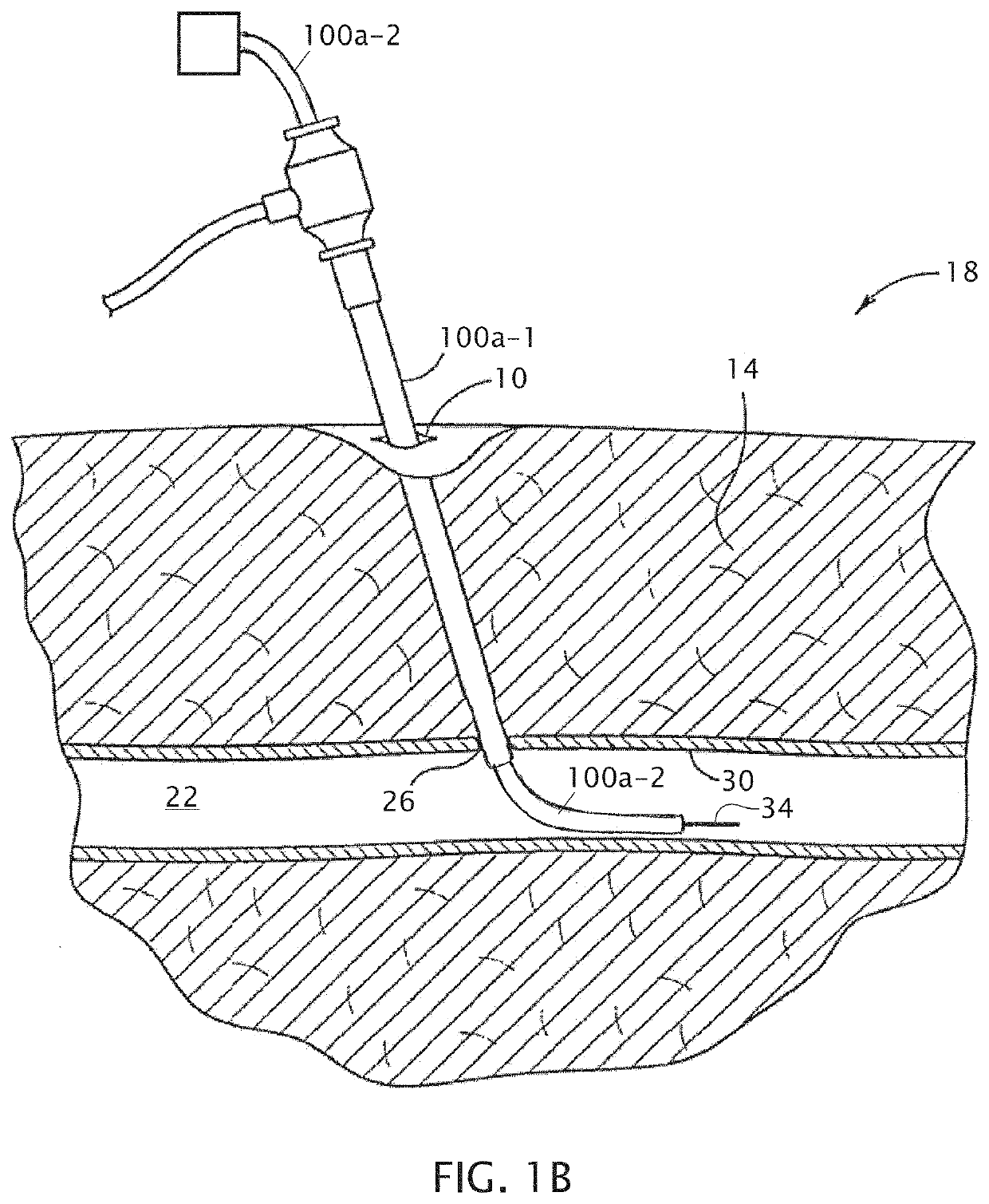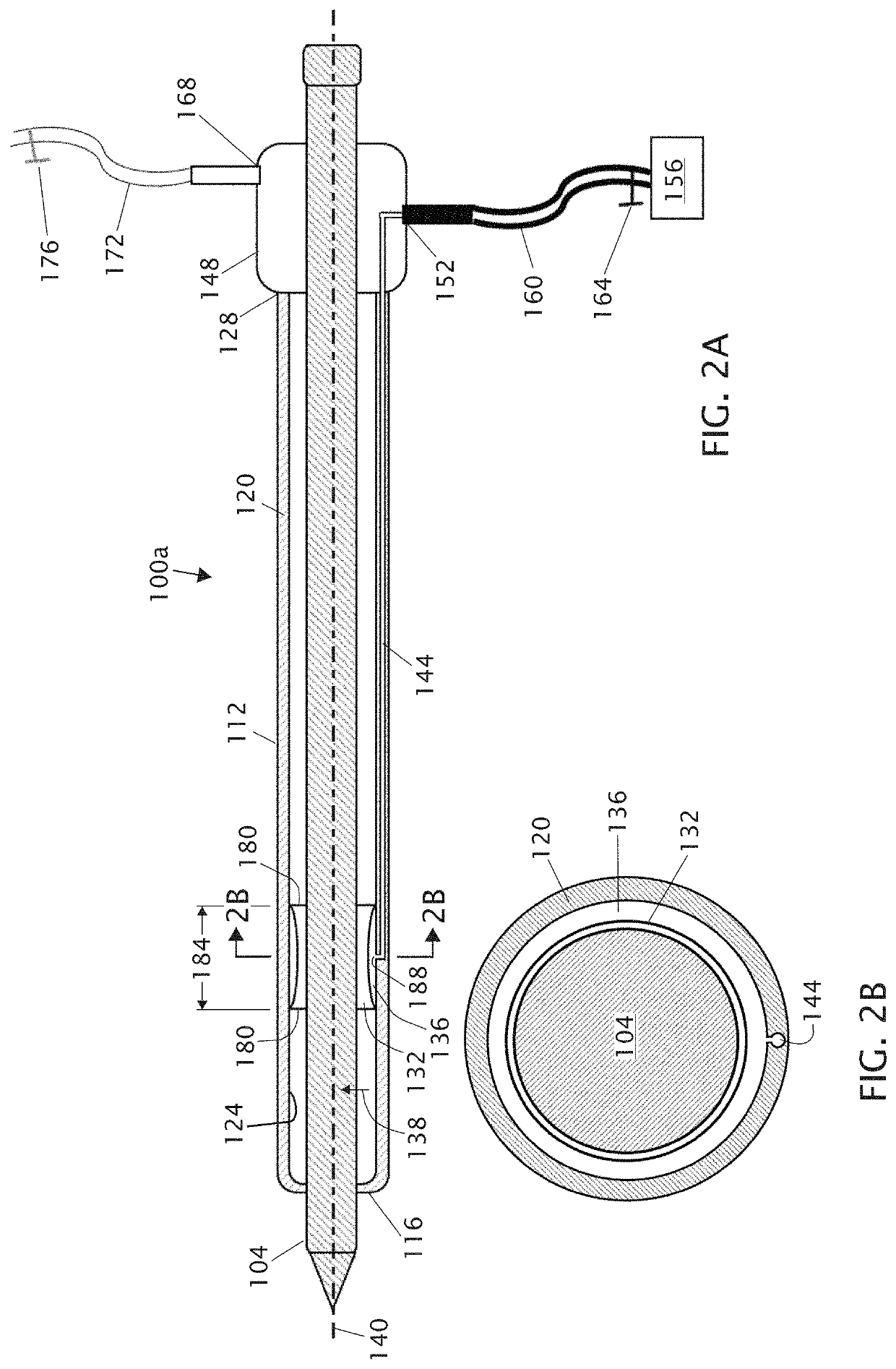Trapping sheaths and guide catheters
a technology of guide catheters and trappers, which is applied in the direction of multi-lumen catheters, catheters, etc., can solve the problems of increased hospital stay and health care costs, increased patient morbidity, and even mortality, and achieves the effects of improving the support and stability of the device, improving the success and safety of the procedure, and facilitating the imaging of the trapper
- Summary
- Abstract
- Description
- Claims
- Application Information
AI Technical Summary
Benefits of technology
Problems solved by technology
Method used
Image
Examples
Embodiment Construction
[0027]Referring now to the drawings, and more particularly to FIGS. 1A-1B, shown there are perspective and side cutaway views, respectively, of an introducer sheath 100a-1 and a guide catheter 100a-2 extending through a patient's skin and into one of the patient's blood vessels. During the depicted example of a catheterization procedure, a healthcare provider (typically a physician) makes an initial incision 10 in the upper thigh 14 of a patient 18. The provider can then insert a needle (not shown) through the skin via incision 10 to locate the desired blood vessel. In other embodiments, the initial incision is not separately made and a needle is instead inserted through unbroken skin such that the needle generates its own incision through the skin. When a sufficient amount of blood (e.g., bright red, spurting arterial blood) appears through needle, the provider will know the needle has pierced the vessel (e.g., femoral artery 22, as shown) through a vessel incision 26 in wall 30 of...
PUM
 Login to View More
Login to View More Abstract
Description
Claims
Application Information
 Login to View More
Login to View More - R&D
- Intellectual Property
- Life Sciences
- Materials
- Tech Scout
- Unparalleled Data Quality
- Higher Quality Content
- 60% Fewer Hallucinations
Browse by: Latest US Patents, China's latest patents, Technical Efficacy Thesaurus, Application Domain, Technology Topic, Popular Technical Reports.
© 2025 PatSnap. All rights reserved.Legal|Privacy policy|Modern Slavery Act Transparency Statement|Sitemap|About US| Contact US: help@patsnap.com



